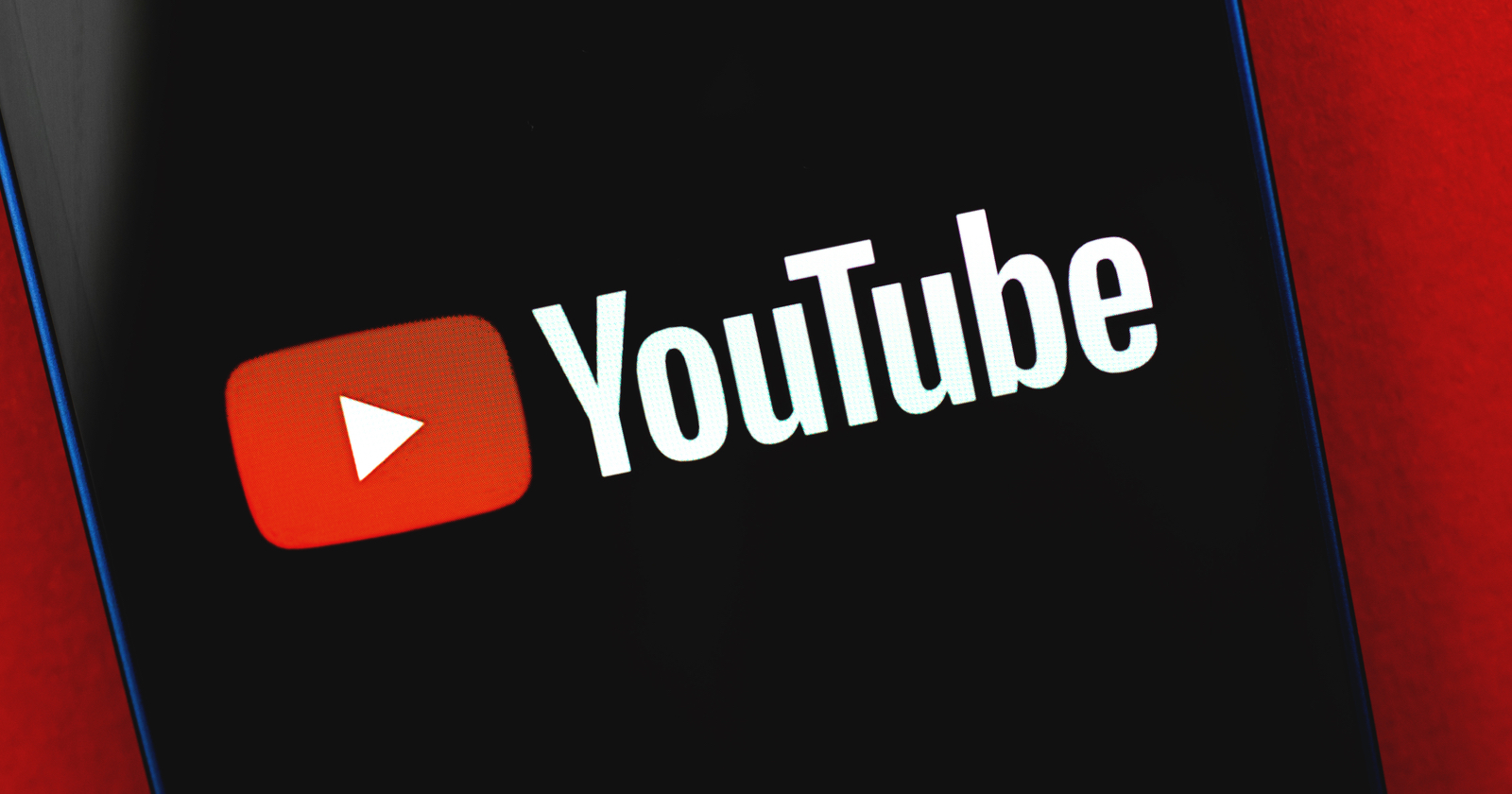YouTube’s algorithm has changed over the years to reward viewer satisfaction over total clicks and views.
So what does that mean for marketers?
This article contains an overview of how YouTube’s algorithm works and what it’s designed to do.
There are a total of 20 facts about YouTube’s algorithm throughout the following sections, which have all been confirmed by the company itself.
A summary of all facts is listed at the end.
Let’s start with clearing up some misconceptions.
YouTube Algorithm Misconceptions
A major misunderstanding marketers have about YouTube is that all content is ranked by one algorithm.
YouTube has multiple algorithms for ranking content in the different areas where videos are surfaced. This includes the home page, suggested videos, and search results.
This article focuses on how YouTube’s recommendation system works, which consists of the home page and suggested videos algorithms.
YouTube says the recommendation system is where most traffic to videos comes from, not the search bar.
Advertisement
Continue Reading Below
YouTube’s recommendation system is designed to find videos for viewers, rather than viewers for videos.
It isn’t designed to push out or promote videos to viewers. The recommendation system works the opposite way.
When a user visits YouTube the recommendation system pulls in videos and ranks the best candidates according to what that user is most likely to watch.
YouTube aims to help each viewer find videos they want to watch, and maximize long term viewer satisfaction so they keep coming back.
Top YouTube Ranking Factor: Viewer Satisfaction
How YouTube ranks content for users has changed over time. Here’s a brief history:
- 2011: Top ranking factors were clicks and views.
- 2012: Top ranking factor was watch time.
- 2015-Today: Top ranking factor is viewer satisfaction.
Ranking videos based on total clicks and views proved to be ineffective as it lead to an abundance of clickbait with misleading titles and thumbnails.
Advertisement
Continue Reading Below
Total watch time seemed like a better way to rank videos. However, there were flaws as it did not take into account whether users enjoyed the content they watched.
Now, YouTube’s top priority is to rank content according to what will leave a user feeling satisfied.
How YouTube Measures Viewer Satisfaction
YouTube uses a combination of surveys and signals to measure viewer satisfaction.
YouTube learns what users like by periodically displaying surveys asking how they feel about videos they watched.
Data from the surveys is used to train prediction models to identify which videos are highly satisfying.
YouTube also uses engagement signals to measure viewer satisfaction, such as likes and dislikes and clicks of the ‘not interested’ button.
How YouTube Ranks Content on the Home Page
The YouTube home page shows users a selection of videos its algorithms have determined they’re most likely to watch.
YouTube’s home page ranking algorithm uses a combination of performance and personalization signals. It aims to deliver the most relevant recommendations to each viewer.
Ranking on the YouTube home page is based on:
- Performance: Using click-through rate and average view duration, YouTube measures how well a video engaged other viewers when they saw it on their home page.
- Personalization: YouTube personalizes a user’s video recommendations based on their watch history and how often they engage with a specific channel or topic.
Recommendations for Marketers
To maximize performance on the YouTube home page, take an objective look at your video and pretend you’re a new viewer who is unfamiliar with your channel.
If all the context you had was a video’s title and thumbnail, would you be compelled to click?
Uploading consistently can help sustain audience interest and help viewers build a routine around watching the channel. This is key to generating viewer satisfaction signals.
How YouTube Ranks Videos in the ‘Suggested’ Section
Suggested videos, which appear on the right-hand side of the screen while viewing content, offers users a selection of videos they’re likely to watch next.
The suggested videos section doesn’t only show videos that are relevant to the one being watched. YouTube’s algorithm also takes into account the user’s prior activity.
Advertisement
Continue Reading Below
YouTube aims to ensure videos pulled into the suggested section are both personalized and related to what a user is currently watching.
YouTube’s suggested videos algorithm uses ranking signals such as:
- Which videos are often watched together.
- Which videos are related by topic.
- Which videos has a user previously watched.
By understanding what videos are often watched together, YouTube is able to identify videos users are likely to watch but haven’t been exposed to yet.
Knowing how much of a channel or topic a user has watched in the past can help YouTube identify what to suggest more or less of.
Recommendations for Marketers
Developing a series of videos can help get more of your videos featured in the suggested section.
Having identifiable branding, with a consistent title and thumbnail style, will make it easier for users to spot your videos among all other suggestions.
Ending each video with a call to action to watch another video can keep viewers engaged and generate the important user satisfaction signals.
Advertisement
Continue Reading Below
Utilizing playlists and end screens can also help get more of your videos featured in the suggested section.
External Factors Impacting YouTube Rankings
It’s important for marketers to keep in mind that external factors may be impacting their video rankings on YouTube’s home page and suggested sections.
These factors are outside of a content creator’s control. They include:
- Topic interest: Different topics have different potential audience sizes. Niche topics may get limited exposure due to lack of widespread interest.
- Competition: How much time your audience spends with content from other channels can impact how much of your content is recommended to them.
- Seasonality: YouTube viewership fluctuates throughout the year and usually goes down during holidays. Topic interest can change with seasons. For example, outdoor videos are more popular in summer.
Recommendations for Marketers
Although external factors exist, do not automatically assume a drop in viewership is due to a factor outside of your control.
If you notice an extended drop in impressions for 3 months or longer, that may be a sign to try something new with your content.
Keep experimenting because peoples’ interests change over time. If you routinely produce content around a specific topic, then pivoting to a different topic may help bring impressions back up.
Advertisement
Continue Reading Below
In Summary: 20 Facts About YouTube’s Algorithm
Here’s a summary of the 20 things you just learned about YouTube’s algorithm:
- YouTube’s algorithm is actually two algorithm – the home page algorithm and suggested videos algorithm.
- The two algorithms are referred to as the recommendation system.
- Most video traffic is generated by YouTube’s recommendation system, not search results.
- The recommendation system pulls videos in for individual users, rather than pushing content out for all users.
- Videos are pulled in according to what an individual user is most likely to watch.
- The ranking priorities of YouTube’s algorithms have changed over time.
- In 2011, clicks and views were a top ranking signal.
- In 2012, total watch time was a top ranking.
- From 2015 to today, viewer satisfaction is the top ranking signal.
- YouTube uses surveys to measure viewer satisfaction.
- Clicks of the ‘not interested’ button are a viewer satisfaction signal.
- Likes and dislikes are a viewer satisfaction signal.
- Average view duration is a viewer satisfaction signal.
- Average percentage viewed is a viewer satisfaction signal.
- Ranking on YouTube’s home page is based on a combination of performance and personalization.
- Performance is measured by how users engage with a video in the context it’s shown.
- Personalization is based on a user’s previous activity.
- Videos shown in YouTube’s suggested section are both personalized and related to the current video.
- YouTube’s suggested videos algorithm aims to understand which videos are often watched together.
- External factors can impact YouTube’s video recommendations, which include topic interest, seasonality, and competition.
Insight from Industry Experts
While putting together this article I reached out to several industry experts for their take on YouTube’s algorithm and what’s currently working for them.
Greg Jarboe, the president and co-founder of SEO-PR and author of YouTube and Video Marketing, says:
“The goals of YouTube’s search and discovery system are twofold: to help viewers find the videos they want to watch, and to maximize long-term viewer engagement and satisfaction. So, to optimize your videos for discovery, you should write optimized titles, tags, and descriptions. This has been true since July 2011, when the YouTube Creator Playbook became available to the public for the first time.
However, YouTube changed its algorithm in October 2012 — replacing “view count” with “watch time.” That’s why you need to go beyond optimizing your video’s metadata. You also need to keep viewers watching with a variety of techniques. For starters, you need to create a compelling opening to your videos and then use effective editing techniques to maintain and build interest through the video.
There are other ranking factors, of course, but these are the two most important ones. I’ve used these video SEO best practices to help the Travel Magazine channel increase from just 1,510 to 8.7 million views. And these video SEO techniques help the SonoSite channel grow from 99,529 views to 22.7 million views.
The biggest recent trend is the advent of YouTube Shorts, which is discoverable on the YouTube homepage (in the new Shorts shelf), as well as across other parts of the app. For more details, read “Can YouTube Shorts Be Monetized? Spoiler Alert: Some Already Are!“”
Advertisement
Continue Reading Below
Brie E. Anderson, an SEO and digital marketing consultant, says:
“In my experience there are a few things that are really critical when it comes to optimizing for YouTube, most of which won’t be much of a surprise. The first is obviously the keyword you choose to target. It’s really hard to beat out really large and high authority channels, much like it is on Google. That being said, using tools like TubeBuddy can help you get a sense of the keywords you can compete for.
Another big thing is focusing on the SERP for YouTube Search. Your thumbnail has to be attention grabbing – this is honestly what we test the most and one of the most impactful tests we run. More times than not you’re looking at a large face, and max 4 words. But the amount of contrast happening in the thumbnail and how well it explains the topic of the video is the main concern.
Also, adding the “chapters” timestamps can be really helpful. YouTube actually shows these in the SERP as mentioned in this article.
Lastly, providing your own .srt file with captions can really help YouTube understand what your video is about.
Aside from actual on-video optimizations, I usually encourage people to write blog posts and embed their videos or, at the very least, link to them. This just helps with indexing and building some authority. It also increases the chance that the video will help YOUR SITE rank (as opposed to YouTube).”
Advertisement
Continue Reading Below
Sources: YouTube’s Creator Insider Channel (1, 2, 3, 4), How YouTube Works


